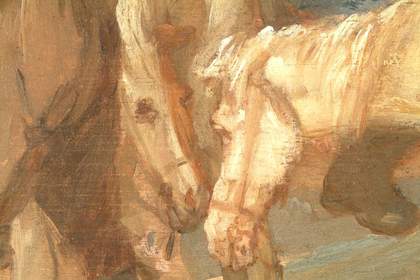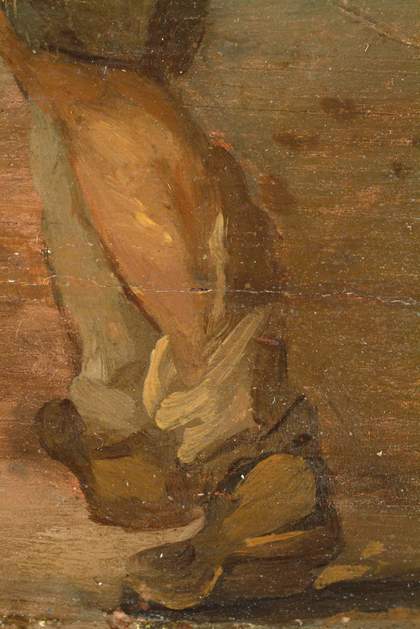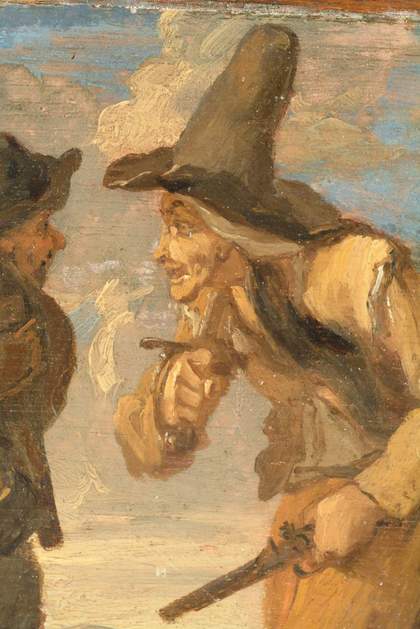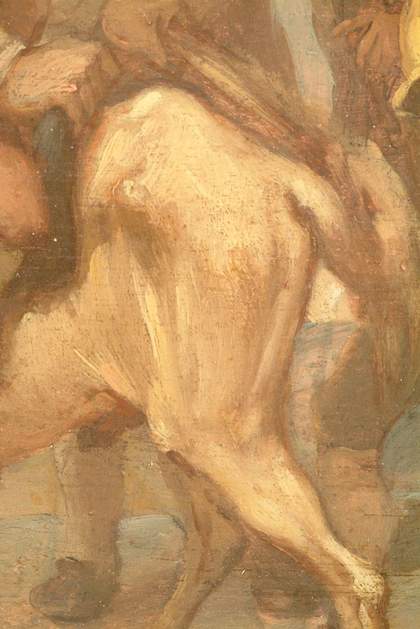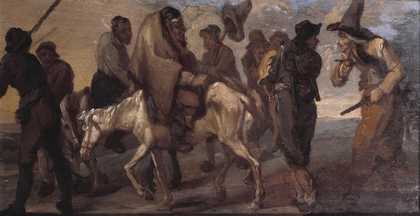
Fig.1
Francis Le Piper ?1640–1695
Hudibras and Ralph taken Prisoner
c.1664–77
Oil paint on panel
232 x 432 mm
T00248
This painting is in oil paint on wooden panel measuring 232 x 432 mm (fig.1). The panel is a single piece of oak, cut tangentially and with uneven thickness. It is up to 5 mm thick. The grain of the wood runs horizontally (figs.2–4). An ‘L-section’ oak batten, about 30 mm wide and 10 mm deep is attached with glue to the top edge of the panel. There would have been similar battens on the other edges as part of an original framing device, which occurs also in the other three panels in this series (T00247, T00620 and T00621). Again like the other three panels, the wood could not be dated using the standard dendrochronological reference charts; this would indicate that the oak is British because the established data comes from trees that grew in the Baltic area.1 Owing to its irregular cutting and the presence of the batten, the panel has developed a complex warp and has been subject to splitting in the past.
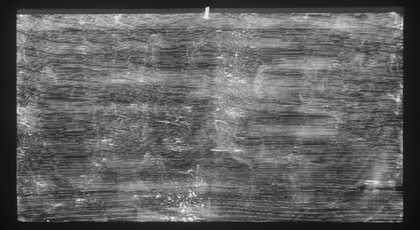
Fig.2
X-radiograph of Hudibras and Ralph taken Prisoner
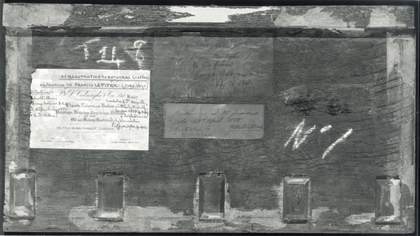
Fig.3
The reverse of Hudibras and Ralph taken Prisoner, photographed in black and white
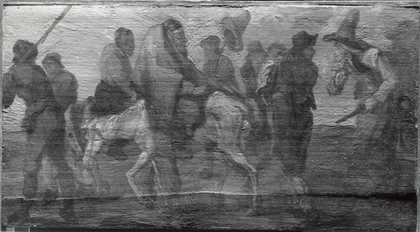
Fig.4
Hudibras and Ralph taken Prisoner photographed in raking light from the top in black and white
The ground is opaque salmon pink and extends all over the front of the panel (figs.5–6). Brushstrokes from its application are visible here and there. It is composed of lead white, a range of earth pigments, Cologne earth, smalt and black, bound together in oil.2
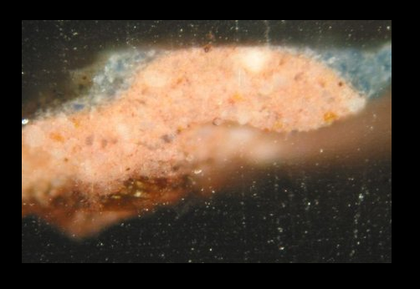
Fig.5
Cross-section through the sky, photographed at x260 magnification. From the bottom: pink ground; blue paint of the sky, which is a mixture of lead white, ultramarine and smalt
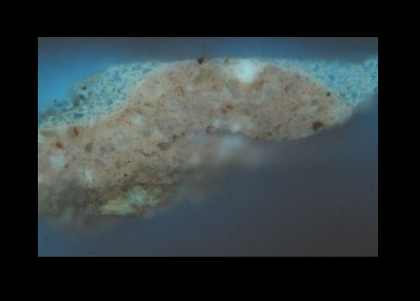
Fig.6
Cross-section through the sky, photographed at x260 magnification in ultraviolet light. From the bottom: pink ground; blue paint of the sky, which is a mixture of lead white, ultramarine and smalt
No linear underdrawing is visible with the eye or with infrared (fig.7) but certain features were laid in with reddish brown and green paint, which was allowed to dry before the artists proceeded further.
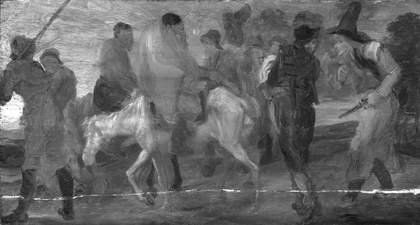
Fig.7
Infrared reflectograph of Hudibras and Ralph taken Prisoner
Thereafter the painting appears to have been done in one layer, the colours mixed on the palette and worked into one another wet-in-wet on the prepared surface of the panel with bold, vigorous brushwork and fairly thick, creamy, opaque paint (figs.8–11).
The painting was treated for minor splitting in the panel and associated consolidation of paint in 1973. Otherwise it has needed no significant treatment since acquisition by Tate in 1959. The varnish is a natural resin.
November 2003

